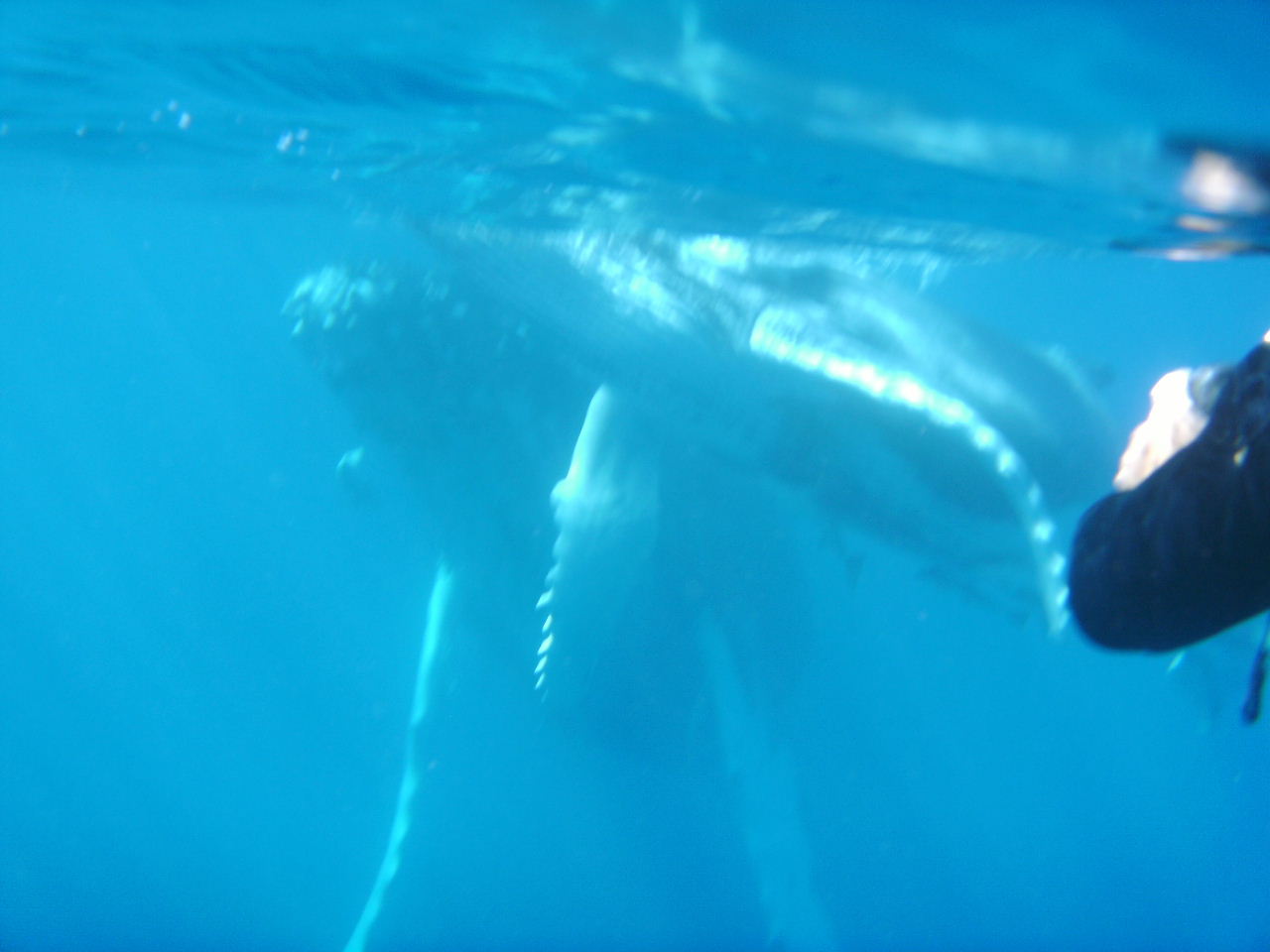Just when you think it cannot get any better...Living in a Wildlife Documentary Part 2

CuriousOyster
Steve & Trish Brown
Mon 16 Aug 2010 19:01
|
Just when you think it cannot get any better.....it
does!
Whale watching is big business world wide but Nuie
and Tonga are two of only 3 or 4 places in the world where you can
swim with Whales. Every year Humpack Whales come in fairly large
numbers to calve and to mate in the waters around the Vava'u Group of islands in
northern Tonga, where they are safe to have their
calves in the protected waters beyond the reefs. The males stay out in deeper
waters looking for unattached females whilst the expectant mothers come into the
shelter of the reefs and islands to have their young. They then stay
there until the young calf is big and strong enough to make the journey
south to their feeding grounds in Antarctica.
There is an ongoing debate amongst whale groups and
marine biologists regarding the impact of tourism (whale watching) on the whale
populations around the world and in particular regarding the impact of groups of
snorkellers swimming alongside mothers with young calves.
We had arrived in Neiafu at the same time as a
heated debate was raging between the tour operators, the local ex pat community
and local guides about the impact on the whale population that is so important
to Tonga's tourist economy.
Trish and I had read various articles and reports
regarding the impact of swimming with the whales and having had very close
encounters with Humpback Whales in Antarctica and been convinced that they were
just as curious and playful as dolphins regarding human contact, we decided that
we would go and see for ourselves.
Together with 6 friends from 3 other boats we went
as a group agreeing that if we were not happy with the effect swimming with the
whales was having, or if the whale boat was getting too close or too intrusive,
we would make our objections known.
So off we went and we had the amazing good fortune
to encounter a mother with a week old calf within 30 minutes of leaving the
harbour. They were swimming slowly in the lee of a small island with the mother
coming to the surface every few minutes to breath and the calf playing
alongside, sometimes breaching, sometimes rolling over and always close to its
mother. In groups of 4 we were allowed into the water and told to stay back from
the mother and calf.
In the event both mother and calf came up to us,
allowing Trish and the others with cameras to get some of the most memorable
pictures and videos they will ever take.
 This calf is about 1 week old, was 4m long at berth
and weighed 2.5 tonnes. It feeds from its mothers highly nuitritious milk,
gaining on 25kg A DAY until it has put on
about 10cm of blubber when its mother will begin her journey back to her feeding
grounds in Antarctica
 At all times the mother was in complete control of
the situation, allowing the calf to come close to the swimmers,
gently guiding it away if it got too close. On
one occasion when the calf was getting a bit too close, she swam up from below
and eased the calf away. In doing so she herself
got very close to the four of us in the water,
Trish and Gordon got some of
the most incredible video footage before they both
decided that a 40 tonne , 45ft humpack
swimmimg just 4ft below was
TOO close for comfort and tried to swim away. In
the event this was futile as the mother, always
aware of our presence and
position, used only her pectoral fins to
swim to her calf. At no time did she use her huge tail to propel herself, able to move
quickly and easily with her 10ft long pectoral
fins.
I lay quietly above her as she swam past acutely
aware that if she did decide to swat me away she could!
 At all times the mother was relaxed, swimming
slowly and allowing her calf to play. At times she would hang quietly
about 10ft down and allow her calf to suckle. The
calf made contact with its mother frequently, nudging her under the
chin,
rolling across her back, sliding its pectoral fins
along her length and sitting on her head. Its difficult not to put human mother
and child comparisons on this behaviour but there
were many similarities between a young baby and a caring mother.
  Once we moved away from the two of them, they
continued to swim quielty through these tranquil waters, sometimes
breaching,
sometimes slapping the water, occasionally resting
for the calf to feed.
Had we harmed them in any way? I don't think
so.
Does whale tourism have an impact on the whales?
Certainly, but today at least 8 more people are aware of their beauty and
grace.
Had we altered their behaviour? Possibly
but as Darwin said...It is not the strongest, fittest or fastest that survive,
but those creatures most adabtable to change.
What does harm the whales?..... Japanese whalers
and other "scientific" whaling nations in large steel ships with explosive
harpoons !!!
We must find a way to stop them KILLING these
truly incredible creatures!
|